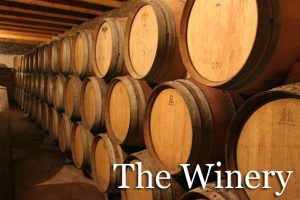Winemaking – Into the winery…
On arrival at the winery the grapes will be crushed and
de-stalked. Pressing then follows to release the juice. The gentler the
pressing, the finer the juice. The juice (also called ‘must’) is allowed to
settle for a few hours. Any adjustments to the must can be done at this stage,
including the addition of extra sugar (‘chaptalisation’). A little sulphur
dioxide, the main preservative used in winemaking, is usually added as well.
It is normal nowadays to add a yeast culture to the must to start the
fermentation. The yeast attack the sugar and convert it into alcohol and carbon
dioxide. Most white wines are fermented at a low temperature between 15 and 20
degrees to retain freshness. It takes about two weeks for all the sugar to be
converted, leaving you with a dry white wine. Most fermentations now take place
in stainless steel vats, although some of the smarter white wines are fermented
in small oak barrels.
Once the fermentation has finished the yeast sinks
to the bottom of the vat and forms a sediment (the ‘lees’). Whilst resting on
the lees wine can undergo a second transformation called ‘malolactic
fermentation’. In this process bacteria attack the malic acid (which has a sour,
green taste) and convert it into lactic acid (which is softer and more buttery).
Winemakers can now decide whether to encourage or block this transformation.
The wine will then be drained out of the vat leaving the lees behind (a
process called ‘racking’). Most white wines will then be matured for a short
period, usually around six months or so. If this period is spent in oak barrels,
the wine will pick up some of the distinctive oak flavours. By contrast, if this
time is spent in stainless steel, the wine will retain its pure fruit character.
Red Wine
On arrival at the winery the black grapes are crushed and
de-stalked, but are then pumped direct to the fermentation vats. The essence of
red winemaking is that the must will ferment in contact with the skins, from
which colour and tannin are extracted. Any additions of sugar, sulphur dioxide
or yeast can be made directly to the fermentation vat. To assist in the
extraction of colour, most red wines are fermented relatively warm(25-32
degrees). It is also usual to mix the skins and must together as much as
possible during the fermentation.
Once the fermentation has finished
most of the red wine can be drained off through gravity. This component is
called ‘free run’ red wine. The skins and pips are then removed from the vat and
pressed to release the ‘press wine’. The latter can sometimes be excessively
harsh and tannic, but on other occasions it can be blended with the free run
wine to improve its body.
All red wines undergo malolactic fermentation
to soften them, before racking and maturation. Red wine is usually matured
longer than white – around 18 months or more. As with white wine, the use of oak
barrels (particularly if they are new) will have a significant effect on the
wine’s character. Because the red wines spend so long in wood, it is normal to
rack them every three months or so to remove any sediment that has accumulated.
Rose Wine
Of course it is possible to make rose just by mixing red and white wine, but this is not the usual approach. The normal
technique is to take black grapes, crush them, and allow the juice to stay in
contact with the skins for a few hours. The juice will pick up some pink colour
from the skins, and once this is achieved, the juice is drained off the skins.
From then on the production of a rose follows the white wine process, with a
cool fermentation and a short period of maturation.
Sparkling Wine
Only sparkling wine from Champagne can be called
Champagne. All other sparkling wines must be labelled as such. Various
techniques exist for making sparkling wine.
The traditional method
involves taking a base wine and putting it through a second fermentation in
bottle. The carbon dioxide produced during the second fermentation cannot escape
from the bottle and so the wine turns fizzy. The traditional method is the most
expensive and time-consuming, and is used for all the great Champagnes. Other
sparkling wines such as Cava (Spain) use it, and label their bottles accordingly
– ‘Traditional Method’.
The tank method also involves a second
fermentation, but in this case it takes place in a large vat, rather than in an
individual bottle (e.g. Vin Mousseux and most Sekt).
Carbonation or the
bicycle pump method involves taking a base wine and injecting carbon dioxide.
This is the cheapest method – also used for fizzy canned drinks. The bubbles are
large and disappear quickly.
Sweet Wine
Various techniques
exist for making sweet wine. If a winemaker is lucky enough to have grapes with
noble rot, then these berries contain so much sugar that the yeast cannot
ferment it all, leaving some residual sweetness (e.g. Sauternes). A dry wine can
be sweetened by adding unfermented grape must (e.g. Liebfraumilch). Note: It is
usually illegal to sweeten a wine just by adding sugar. The fermentation can be
arrested either by refrigeration (e.g. Asti) or by the addition of brandy (e.g.
Port).
Fortified Wine
Fortified wines tend to have complex
production processes which differ markedly from each other. However, brandy
(also known as ‘grape spirit’) is added during their production. With Sherry the
spirit goes in after the fermentation, whereas with Port it goes in during the
fermentation.





